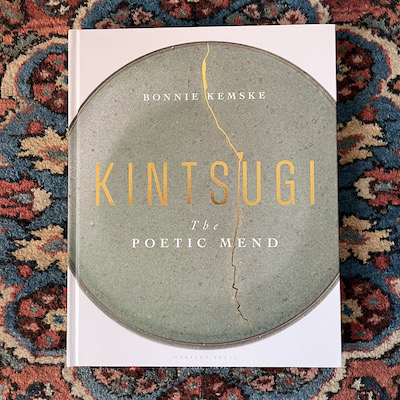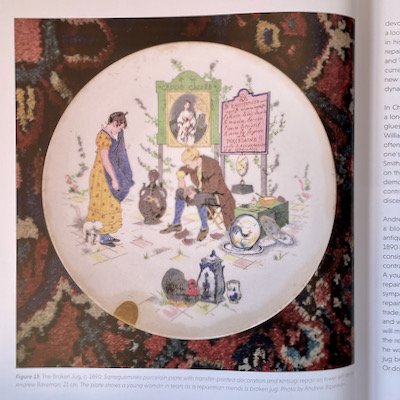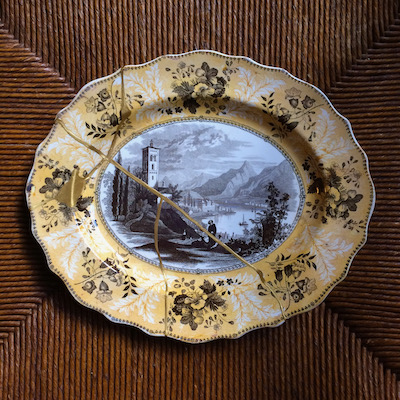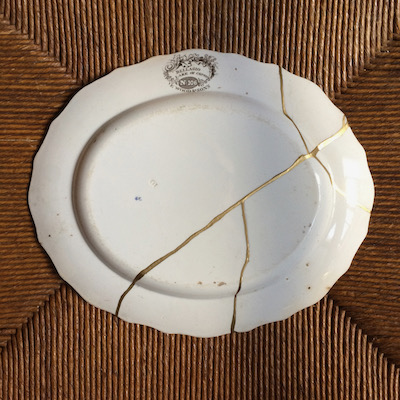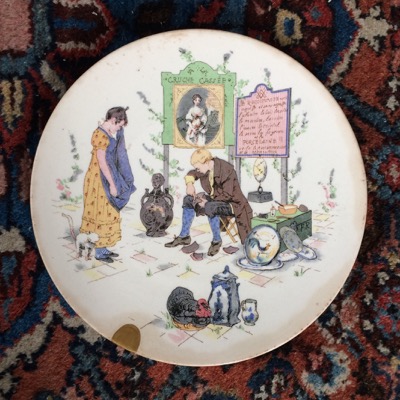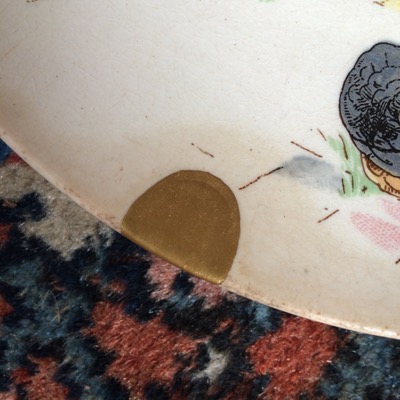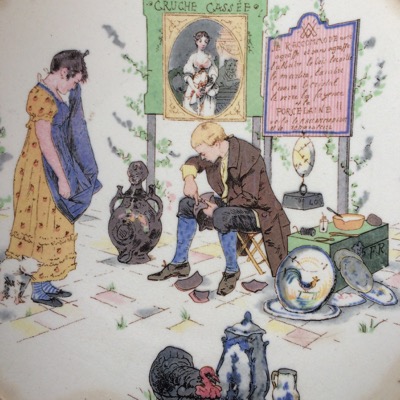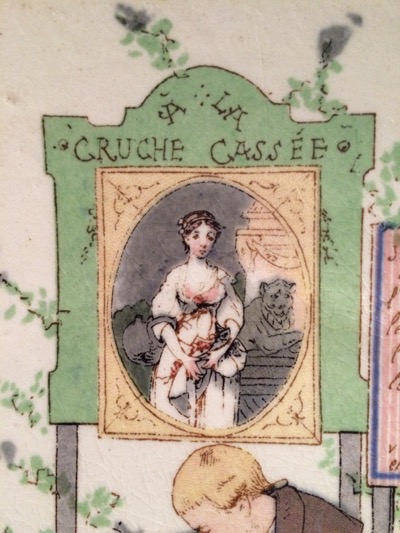Many years ago, Mark inherited dozens of pieces from a large earthenware dinner service made in England by Enoch Wood & Sons, c.1835-1846. The set was previously owned by his grandparents and although I assumed they liked it, everyone else in the family thought it was ugly. I am not typically a fan of multi-color transferware but I love this set, especially the Grand Tour theme, consisting of different romantic European vistas. After his grandfather passed away, it was clear that nobody wanted the dishes except for us. Before we received them, Mark’s uncle Dick extracted some of the pieces and sent one to each family member as a memento, including this small platter, which was sent to Mark’s mother Mary. Sadly, it did not make the journey from Massachusetts to Washington intact. The shattered platter sat on top of Mary’s piano for a couple of years and the next time I saw it, about a year later, a small tube of glue was sitting amongst the broken shards. After yet another year or so, I saw that an attempt had been made to repair the platter and curiously, a metal washer (!) had been inadvertently glued to the front. At this point, I had to take matters into my own hands and asked Mary if I could rescue the platter and try to repair it myself.
I had recently taken a Kintsugi class to learn the ancient Japanese method of repair using lacquer and gold, and felt this platter was a worthy candidate. I used brown urushi lacquer to join the pieces, painted over the cracks with red lacquer, and finally applied real gold dust. The bond is supposedly stronger than any known cement, epoxy or glue.
The Japanese believe in embracing imperfections and I am thrilled to have brought some dignity back to this poor platter. My next project is a HUGE meat platter from the same set which fell off the wall, shattering into dozens of pieces. I’ve got my work cut out for me so stay tuned.











